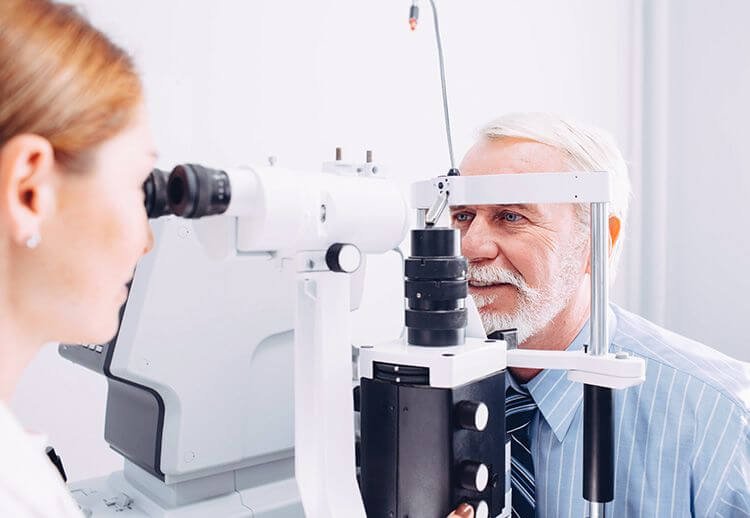It is a rare eye disease that causes blindness, but can be avoided with early detection by the specialist.
Contents
Today, March 12, is World Glaucoma Day, a rare eye disease that causes blindness, but most importantly, it is avoidable. According to the Baviera Clinic, 90% of the blindness caused by this condition could be avoided with an early diagnosis. To reduce its effects, most of which are asymptomatic, there are new techniques for its early detection and specific treatments that slow down its development. This eye disease, according to the WHO, has become the second cause of blindness in the world, only behind cataracts.
More than 80 million people suffer from glaucoma worldwide, and it is estimated that in Spain, there are more than a million chronic cases. In addition, it is an ailment with hardly any symptoms, that’s why half of the patients discover that they suffer from it when their condition is very advanced and with eye damage that is usually irreversible. For this reason, early diagnosis with regular visits to the specialist is very important .
According to Gonzalo Muñoz, “this disease is characterized by not showing its serious effects until the final phase, where the deterioration of the secondary optic nerve causes a loss of lateral or peripheral vision and generates a tunnel effect.
A regular visit to the professional can help detect its appearance in the initial phase, since 90% of blindness caused by glaucoma could be avoided with an early diagnosis
What is glaucoma?
According to the American Academy of Ophthalmology , glaucoma is a disease that damages the optic nerve of the eye. It usually occurs when fluid builds up in the front of the eye, causing it to increase pressure in the eye and damage the optic nerve. There are two main types of glaucoma:
- Chronic open angle glaucoma: This is the most common type of glaucoma. It occurs gradually, when the eye does not drain fluid as well as it should. As a result, the pressure of the eye increases and begins to damage the optic nerve. This type of glaucoma is not painful and does not cause any change in vision at first. Some people may have optic nerves sensitive to normal eye pressure. This means that your risk of glaucoma is higher than normal.
- Closed-angle or narrow-angle glaucoma: This type occurs when a person’s iris is very close to the drainage angle in the eye. When the drain angle is completely blocked, the eye pressure increases rapidly. This is called an acute attack and can blind you. Some of the signs of an attack are blurred vision, severe eye pain, headache, vomiting, or seeing rings or haloes of colored rainbows around the lights.
Population at risk
Glaucoma can affect any age, although chronic open-angle glaucoma occurs in people over the age of 60 and older. Causes of risk include high intraocular pressure, family history, trauma to the eye caused by contact sports, diabetes or myopia magna.
In the case of patients who are aware that a family member has developed this pathology, it is recommended to perform an ophthalmological examination before the age of 20. And if there are no risk factors, you must do the eye study from the age of 40.

Glaucoma Treatments
Research in the field of glaucoma has revealed new diagnostic techniques based on photography of injured eye structures. Thus, the specialist can assess in a more refined way which is the most appropriate treatment for each patient.
Among the main treatments are blood pressure drops, lasers, and surgery. In general, the objective of all of them is to decrease the intraocular pressure that the patient usually suffers. At the pharmacological level, the professional can establish treatments such as rho-kinase inhibitors, but in case the patient requires an intervention, there are new surgical techniques such as implants, non-perforating surgery and canaloplasty.
Tips to prevent glaucoma:
- Check your eyesight regularly: Early detection of glaucoma is vital to prevent vision loss. That is why it is best to periodically go to ophthalmological reviews. From the age of 40, a review must be done every five years and after 65, every two years.
- Follow a diet rich in vitamins: Take fruits and vegetables daily and consult the doctor about the possibility of taking vitamin food supplements. If you are at risk of glaucoma, also moderate or eliminate the consumption of animal fats.
- Drink plenty of water: Especially if you have glaucoma with normal intraocular pressure.
- Practice moderate physical exercise: Perform daily physical activity adapted to your age and state of health. Helps avoid high eye pressure.
- Manage stress: Stress can reduce the effect of medications and increase intraocular pressure.
- Neither tobacco nor coffee: The risk of suffering from glaucoma increases depending on the number of cigarettes consumed, so it is important to abandon this bad habit. It is also not recommended to consume more than three or four cups of coffee a day.
